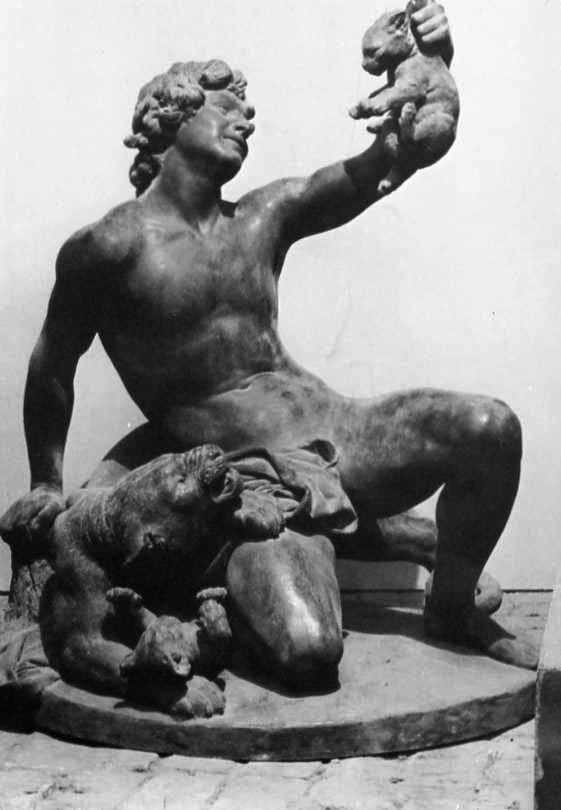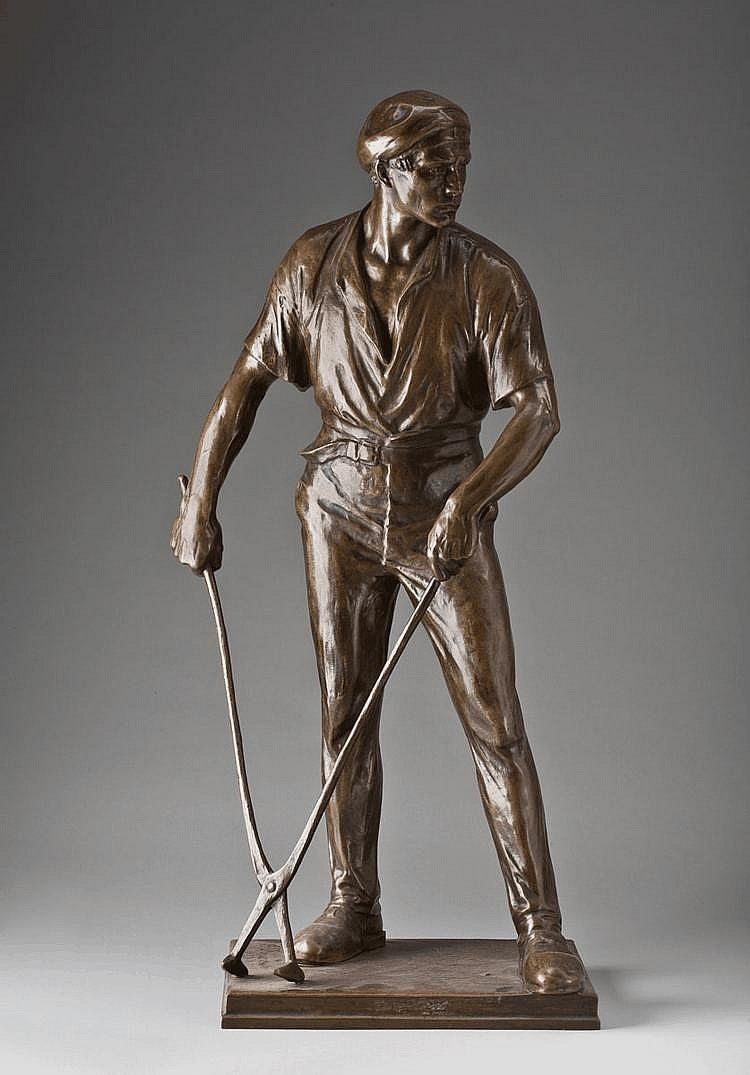Name Gerhard Janensch | Died 1933 | |
 | ||
Gerhard Adolf Janensch (24 April 1860, Zamborst – 2 February 1933, Berlin) was a German sculptor and medailleur.
Contents

Life
At the age of seventeen, he entered the Prussian Academy of Arts, where he studied under Fritz Schaper, Albert Wolff and Paul Thumann. In 1880, he started his own studio in Vienna, but returned to work with Schaper in 1883. The following year, he joined the German Artists' Association and received a stipendium to study in Rome for his work "Bacchant mit Panthern". He finally became self-sufficient in 1886 and began teaching at the Academy, where he remained until 1924. In addition to sculpture, he taught workshops on carpentry, blacksmithing, locksmithing and pottery. In 1892, he succeeded Wolff as head of the modelling class and was named a full member of the Academy in 1897.
One of his most prominent patrons was the drill-manufacturer and telecommunications pioneer Robert Stock. The figure of a blacksmith that Janensch made for display at the Great Berlin Art Exhibition in 1897 later became Stock's tomb sculpture. Other figures of industrial workers (foundrymen, glass-blowers, boilermakers etc.) were a featured display in the "Art and Technology" exhibition, held at the Museum Folkwang in 1928.
